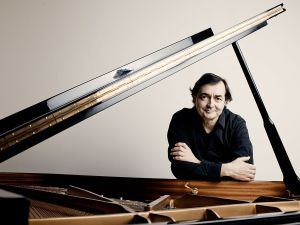Concert | Solo and late at night
Pierre-Laurent Aimard
Recital I

Pierre-Laurent Aimard © Marco Borggreve
With the Well-Tempered Clavier, Johann Sebastian Bach proved from a compositional point of view that a practical solution had been found at the end of the 17th century for a theoretical problem that had occupied Western music since antiquity. Namely the question of how all twelve intervals in the octave should interrelate. Keyboard instruments during Bach’s lifetime were still frequently tuned (or “tempered”) so that each key had its own individual character – which freely had the disadvantage that a composer had to forgo modulations in far-flung keys if he wanted to avoid harmonic friction. Meanwhile, the path for the definitive emancipation from all major and minor keys was already carved in the 1680s: through theories on a tuning based less on mathematical calculations than on acoustic phenomena. Bach was by no means the first composer whose compendium of compositions in all keys attested to this then groundbreaking recalculation of the pitch space within an octave. Nonetheless he created a work with the Well-Tempered Piano that irrespective of music theory also made clear his artistic aspirations. French-born Pierre-Laurent Aimard, a musician who has often blessed Musikfest Berlin with many a magic moment, takes on the first part of this epochal collection of preludes and fugues in all major and minor keys.
Johann Sebastian Bach [1685-1750]
The Well-Tempered Clavier
volume 1 BWV 846-869 [1722]
Preludes and fugues I-XXIV
Pierre-Laurent Aimard piano
A Berliner Philharmoniker Foundation event
in collaboration with Berliner Festspiele / Musikfest Berlin